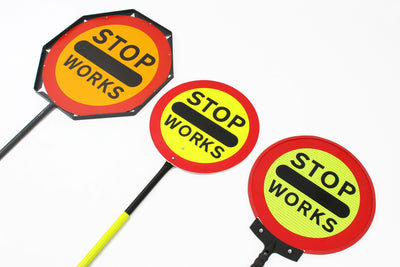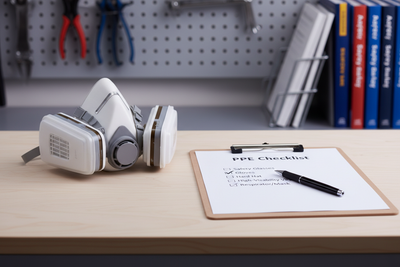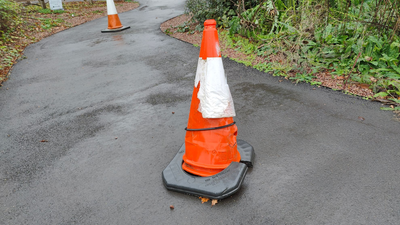How do reflective signs work?
We all take for granted the easy visibility of road signs as we drive after hours or on dark, gloomy winter days. If you were to roll the clocks back, you would quickly realise how many modern innovations make modern road signs massively more visible than their outdated vintage counterparts.
Within this article, we will look at the following points;
- Why are road signs made from reflective materials?
- How do reflective signs work?
- How are reflective signs made?
- What makes road signs reflective?
- How to choose the right grade for a reflective sign?
This will help us understand how to choose the right grade of reflective material for road signs allowing you to make an informed decision and get the best results from your permanent reflective road signage. With the myriad of choices available and industry terms for the reflectivity grade, it is easy to get lost in the jargon, which this article will help clear up.
Why are road signs made from reflective materials?
Road signs need to be reflective not just for legislative reasons but also for practical purposes. Reflective signs, specifically retro-reflective ones, make them far more visible to vehicle drivers. They give advanced notice of hazards, restrictions, regulations, and directions, improving road safety as drivers have more time to react and adjust to posted changes in road conditions or information.
Retro-reflective signage takes any light that hits the sign from vehicle headlights and bounces it back to the source, allowing the driver to see the sign brightly and clearly against an otherwise dimly lit background. This also has the benefit of the sign not needing to be illuminated independently, saving power and causing light pollution. Any drivers will have almost certainly noticed that road signs seem to “light up” when your headlights hit them, even compared to otherwise light and reflective surrounding surfaces.
How do reflective signs work?
Reflective signs rely on retro-reflective materials to function, but what is the difference between reflective and retro-reflective materials?
If you shine a torch at a mirror at a 45-degree angle, the light will simply bounce off the mirror and shine onto a nearby object almost none of the light will be returned to the source, and the mirror will appear no brighter to you.
In the same test, a retro-reflective surface will take the light from the torch and send a very high proportion of it back directly to the source; in return, you will see the surface light up almost as if it were self-illuminating.
How are reflective signs made?
Modern-day road signs are made from various materials. The most common composition is a composite backing (substrate) with a retro-reflective face and sometimes an optional overlay to protect from graffiti or other contaminants.
The substrate provides a flat surface that is structurally strong enough to support the face material; it will normally incorporate some mounting hardware, allowing the sign to be attached to a post, wall, gantry or similar support.
The face material is made from reflective sheeting. This can be supplied in various colours, but it is supplied on large blank white/silver rolls for most traffic applications. These are then printed using specialist inks that allow colours to stand out vibrantly while also hardening them to the detrimental effects of the sun's UV rays.
During manufacturing, the face is printed, and then each face is “rolled” onto the substrate, similar to how you would apply a phone screen protector but at a much larger scale.
What makes road signs reflective?
Road signs are made reflective by the retro-reflective films used to face the signs. Stepping back in time, signs were made reflective by using items such as glass marbles (similar to cat eyes) to highlight wording and features.
Large cat's eyes evolved to use thousands of tiny glass beads bonded into a sheet, each one acting like a larger cat's eye to bounce light back at the source. However, these struggle to perform where street lighting is present, as the amount of light returned to the source is often not adequate to make the sign stand out in car headlights.
Most road-grade materials now use specially formed plastic films with an adhesive backing that emulate and improve upon the performance of glass beads. These films are far more reliable, resistant to wear and tear, and outperform alternatives by a large margin.
How to choose the right grade for a reflective sign?
By now, you should understand why there are so many types of reflective materials and why their properties can differ so greatly.
So, which grade do you need for your installation? For simplicity's sake, we have narrowed this range down to common types that are predominantly used in the UK and omitted some of the fringe and lesser-used products.
- RA1 (also known as R1 & AEGP) - Returning 16% of light to its source, this grade is most commonly used for signs that are not critical for drivers and are targeted at pedestrians and cyclists. Example applications include parking restriction signs, cycle route signs and street names.
- R2 / RA2 (also known as HIP)—Ramping up the performance, these signs return 32% of light to its source or the driver. These are some of the most common signs used on the UK road network and represent most speed limit signs and other standard general road signage.
- R3B—This grade of material returns 58% of light to the driver. It is used where lights are critical or disadvantaged. A disadvantaged sign can be one that is competing with other light sources, mounted to the right-hand side of the road, angled heavily away from the roadway, or mounted exceptionally high.
- R3C—This material has similar performance characteristics to the R3B material yet is targeted more towards HGVs and similar vehicles where the headlight source is further away from the cab. It is very commonly used for HGV-specific signage, such as height restrictions and directions for HGV traffic specifically.
We hope this article has broadened your understanding of the different types of road sign reflective grades, how they work, and why they exist. Should you have any questions, please do not hesitate to to reach out to our team through our contact us page. Alternatively, you can browse our range of road signs, both permanent and temporary, in our store.
- Author
- Tags












